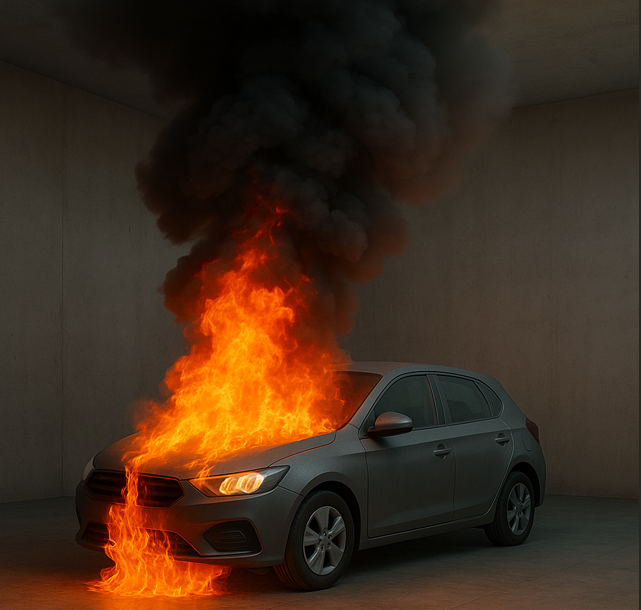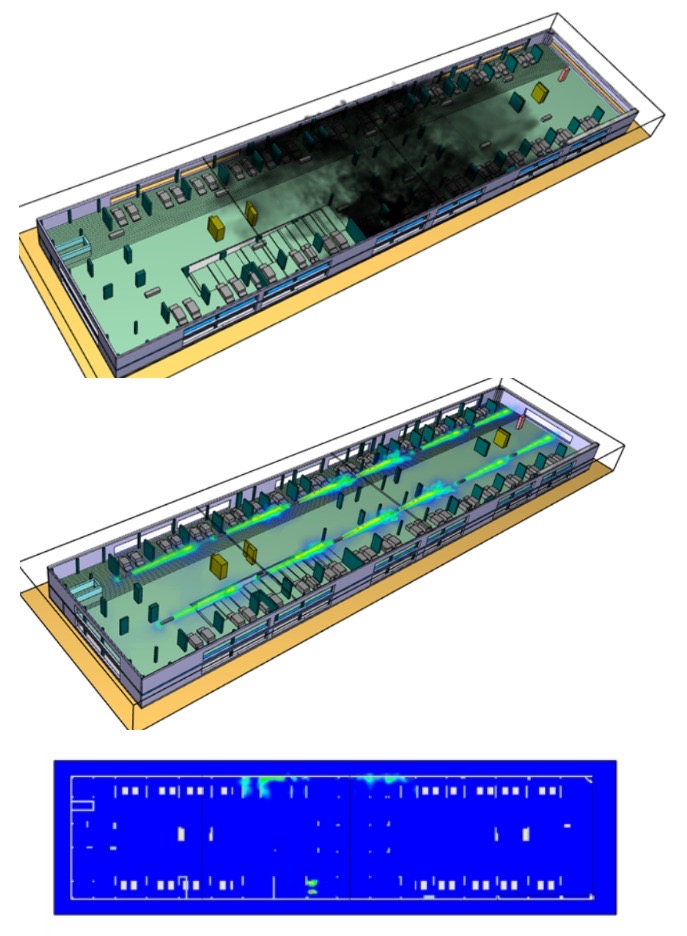
At Lava Consultants, we specialise in delivering advanced Computational Fluid Dynamics (CFD) fire simulations to assess the performance of ventilation systems in car parks during fire scenarios. With increasing urban density and the growing complexity of building layouts, especially in underground and multi-level structures, it is more important than ever to validate that smoke control measures are both effective and compliant with international fire safety standards.
The primary aim of a CFD-based fire and smoke analysis in car parking areas is to ensure the safety of occupants and facilitate firefighting operations. A well-executed CFD study evaluates the ventilation system’s ability to:
Using powerful tools such as Fire Dynamics Simulator (FDS), PyroSim, and other CFD software, we simulate realistic fire scenarios tailored to the specific layout and ventilation design of the car park. These simulations model:
These parameters are tracked over time to ensure that ventilation systems can maintain tenable conditions long enough for occupants to escape and emergency personnel to enter safely.
Carpark CFD modelling is an essential tool for designing safe and compliant parking facilities across Dubai, Abu Dhabi, Sharjah, and the wider UAE. Using Computational Fluid Dynamics our engineers simulate fire and smoke behaviour to evaluate the effectiveness of ventilation, extraction fans, and smoke control strategies. These studies ensure compliance with both Dubai Civil Defence (DCD) and Abu Dhabi Civil Defence (ADCD) requirements, as well as the UAE Fire & Life Safety Code. Carpark CFD helps optimise visibility, temperature, and evacuation conditions during fire events, reducing risks to occupants and supporting smooth authority approvals. At Lava Consultants, we deliver tailored Carpark CFD solutions that give developers, contractors, and MEP consultants confidence in achieving both safety and regulatory compliance.

To ensure compliance with NFPA guidelines, several tenability thresholds must be satisfied during both the evacuation and firefighting phases. These include:
Traditional prescriptive methods often fail to account for the unique spatial, mechanical, and operational characteristics of complex car park structures. In contrast, CFD provides a performance-based design approach that delivers:
At Lava Consultants, our CFD fire modelling services are tailored to ensure your fire safety strategy is resilient, efficient, and fully aligned with international best practices.
Carpark CFD is a simulation technique that analyses fire and smoke behaviour in car parks, ensuring ventilation systems maintain safety and comply with standards.
A CFD study models smoke, heat, airflow, and toxic gases using tools like FDS and PyroSim. It evaluates how ventilation systems perform during realistic fire scenarios.
The NFPA criteria set safety thresholds, including temperature ≤ 60°C, visibility ≥ 10m, CO ≤ 225 ppm, and air velocity ≤ 5 m/s, to protect occupants and firefighters.
Unlike prescriptive methods, CFD provides a performance-based approach that delivers detailed simulations, compliance evidence, system optimisation, and potential cost savings.
© 2025 Lava Consultants. All rights reserved